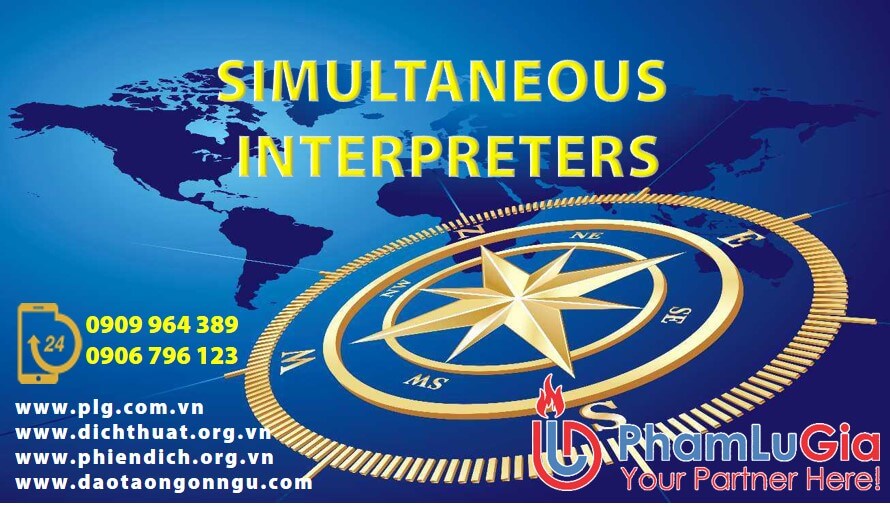What is simultaneous interpretation?
Simultaneous interpretation is a type of real-time interpreting that happens without the involvement of the original speaker.
Simultaneous interpreters sit in a sound-proof booth and interpret in real-time; listeners hear the simultaneous translation via headphones.
Simultaneous interpreting is frequently used in high level international meetings such as multinational annual general meetings, international product launches and global sales presentations. A good example of events where simultaneous translators are used are United Nations conferences.
Simultaneous interpreting is highly skilled work, requiring many years of experience and subject matter expertise. Events that require simultaneous translation need careful planning and specialist equipment.
A minimum of two simultaneous interpreters is required
There are many factors that make a simultaneous interpretation harder than whispering interpreting or consecutive interpreting.
Because this task is so demanding, at least two translators are required for continuous service of more than two hours. This often comes as a surprise for our clients, but it is easy to understand the reason behind this necessity.
Simultaneous interpreting demands so much concentration that any individual can only hope to be effective for periods of 20 minutes or so. After that time, they will need to hand off to a fellow interpreter and rest. While resting, they will continue to follow the proceedings and prepare for their next slot.
Many interpreters will refuse assignments unless they have a deputy, ideally someone they have worked with before.
GET FREE QUOTE

Specialist equipment is necessary for simultaneous translation
To operate to the best of their capacity, simultaneous interpreters require a soundproof booth within view of the speaker and a clear audio feed from the speaker to their headphones.
Each simultaneous interpreter must be equipped with a microphone to relay the interpreted audio to the audience via headphones.
PLG Translation sends professional audio-visual experts in to set up the venue before the interpreters arrive. We warn our clients that this is easier said than done: attempting to cut costs by doing it yourself and getting it wrong often leads to problems, from unintelligible audio to a dissatisfied audience and embarrassed interpreters.
What we need to know to organise your simultaneous translation
PLG Translation has been organised simultaneous translators for over a decade. So that we can provide an accurate quote for simultaneous interpreting which will make your event really sizzle, we will discuss the following with you when you call:
How many language pairs you will require. The number of booths you will need is determined by the number of language pairs.
The number of delegates attending your event. This will determine how many infrared receivers with headphones are required.
The layout of your venue. Common layouts include classroom style, theatre style and U-shaped tables.
Do you require public address (PA) system? PA systems are usually required with theatre layout and where there are over 30 delegates.
How many microphones will you need? This will be determined by the layout of the conference.
Having adequate and timely background information ahead of a simultaneous interpreting assignment is vital. As interpreting is being carried out in real-time, there is no scope for going back and correcting mistakes. If possible, we suggest you:
Provide drafts of speeches and explain any specialist vocabulary to our simultaneous translators.
Schedule some time with the interpreter ahead of the day to brief them on any company policies they should be aware of.
Provide a breakdown of how the day will be structured so that the interpreters can begin to plan their work. It is very likely that one of them has specialist knowledge which would be best used during a particular part of a presentation.
Our experienced and skillful translators in various fields of work will satisfy you. PLG Translation – YOUR PARTNER HERE!
